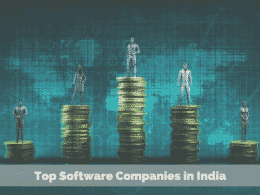In India, the demand for trained data analysts has risen dramatically as the field of data analysis continues to expand. You need to be prepared for the interview process if you are interested in a career in data analysis. You will find the most common data analyst interview questions in this article. Prepare these questions and land your dream job in data analysis.

Most Common Data Analyst Interview Questions
1. What programming languages are you proficient in?
You can answer this question by mentioning the programming languages you are proficient in and providing examples of how you have used them in past projects.
For example, “I am experienced in Python, SQL, and R. In my previous job, I used Python to clean and preprocess data, SQL to retrieve data from a relational database, and R to build predictive models.
2. How do you approach data cleaning and preprocessing?
To approach data cleaning and preprocessing, you should start by identifying and handling missing or incomplete data and then standardizing and transforming the data as needed.
For example, “When cleaning and preprocessing data, I typically start by checking for missing or incomplete data and then handle them by either imputing values or removing them. I also standardize and transform the data using scaling, normalization, or feature engineering.
3. How do you handle missing or incomplete data?
You can handle missing or incomplete data using interpolation techniques by imputing values based on statistical measures such as mean, median, or mode.
For example, “When handling missing or incomplete data, I typically attribute values based on the mean or median of the column or use interpolation techniques such as linear or cubic interpolation to fill in the missing values.
4. Which data visualization tools have you used in the past?
You can respond to this question by listing the data visualization tools you've used before and giving instances of how you've used them to convey data insights.
For example, “I have used tools such as Tableau, & Power BI to create interactive dashboards, visualizations, and charts to communicate insights from data to non-technical stakeholders.
5. Which statistical analysis techniques are you familiar with?
You can answer the above question by mentioning the statistical analysis techniques you know and providing examples of how you have used them to analyze data.
For example, “I am familiar with statistical methods such as regression analysis, hypothesis testing, time series analysis, and clustering. In my previous role, I used regression analysis to build predictive models, hypothesis testing to evaluate A/B tests, and clustering to segment customers based on their behaviour.
Also Read:
- Top 10 Supporting Documents Required for Job Interview
- Top 10 Things Not to Do at an Interview
- How to Use the STAR Method Technique for Interview Questions
6. How do you handle outliers or anomalies in data?
To handle outliers or anomalies in data, you should first identify them using statistical measures such as the standard deviation or interquartile range and then decide whether to remove or transform them.
For example, “When handling outliers or anomalies in data, I typically identify them using statistical measures such as the standard deviation or interquartile range and then decide whether to remove them or transform them using techniques such as logarithmic or power transformations.
7. Have you worked with big data technologies such as Hadoop or Spark?
You can answer this question by mentioning whether you have worked with big data technologies such as Hadoop or Spark and providing examples of using them to analyze large datasets.
For example, “In my previous role, I worked with Hadoop to store and analyze large volumes of data and used Spark to perform distributed data processing and machine learning.
8. Which database systems have you used before?
You can answer this question by mentioning the database systems you have used before and providing examples of how you have used them to store and retrieve data.
For example, “I have worked with relational database systems such as MySQL, PostgreSQL, and Oracle and used them to store and retrieve data using SQL queries.
9. What is your experience with machine learning algorithms?
You can answer this question by mentioning your experience with machine learning algorithms and providing examples of how you have used them to build predictive models.
For example, “I have experience with machine learning algorithms such as linear regression, logistic regression, decision trees, random forests, and neural networks. In my previous role, I used these algorithms to build predictive models for customer churn, lead scoring, and demand forecasting.
10. How do you measure the accuracy of a predictive model?
To measure the accuracy of a predictive model, you can use metrics such as accuracy, precision, recall, F1 score, or the area under the ROC curve.
For example, “When measuring the accuracy of a predictive model, I typically use metrics such as the accuracy or F1 score to evaluate the model's overall performance, and precision and recall to evaluate the model's ability to classify positive and negative instances correctly.
11. How do you handle imbalanced datasets?
You can use techniques such as oversampling, undersampling, or generating synthetic data to handle imbalanced datasets.
For example, “When handling imbalanced datasets, I typically use methods such as oversampling or undersampling to balance the classes or generate synthetic data using techniques such as SMOTE or ADASYN to create new instances of the minority class.
12. Have you ever built a recommendation system before? If so, can you describe your approach?
You can answer this question by describing your approach to building a recommendation system and providing examples of how you have used it to recommend items to users.
For example, “When making a recommendation system, I typically use collaborative or content-based filtering techniques to recommend things to users based on their past behaviour or preferences.
In my previous role, I built a recommendation system for an e-commerce platform that used collaborative filtering to recommend products to users based on their purchase history and browsing behaviour.
13. How do you perform exploratory data analysis?
To perform exploratory data analysis, you should start by visualizing the data using graphs or charts and then identify patterns or relationships in the data using statistical measures or hypothesis testing.
For example, “When performing exploratory data analysis, I typically start by visualizing the data using histograms, scatter plots, or box plots, and then use statistical measures such as the mean, median, or standard deviation to describe the distribution of the data. I also use hypothesis testing to identify significant differences between groups or variables.
14. What is your experience with time series analysis?
You can answer this question by mentioning your experience with time series analysis and providing examples of how you have used it to analyze trends or patterns in time-varying data.
For example, “I have experience with time series analysis techniques such as ARIMA, exponential smoothing, and LSTM. In my previous role, I used time series analysis to forecast demand for a retail company and to analyze seasonal trends in website traffic.
15. How do you evaluate the performance of an A/B test?
To evaluate the performance of an A/B test, you can use statistical tests such as the t-test or chi-squared test or calculate metrics such as the conversion rate or the confidence interval.
For example, “When evaluating the performance of an A/B test, I generally use statistical tests such as the t-test or chi-squared test to compare the results of the control and treatment groups. I also calculate metrics such as the conversion rate or the confidence interval to estimate the impact of the treatment on the desired outcome.
16. What is your experience with data warehousing?
You can answer the above question by mentioning your experience with data warehousing and providing examples of how you have used it to store and retrieve large amounts of data.
For example, “I have experience with data warehousing systems such as Amazon Redshift and Google BigQuery. In my previous role, I used these systems to store and retrieve large amounts of data for reporting and analysis.
17. How do you manage and organize large datasets?
You can use partitioning, indexing, or compression techniques to manage and organize large datasets.
For example, “When managing and organizing large datasets, I typically use techniques such as partitioning to split the data into smaller chunks, indexing to speed up queries, and compression to reduce the storage space required.
18. What is your experience with cloud computing platforms like AWS or Azure?
You can answer this question by mentioning your experience with cloud computing platforms such as AWS or Azure and providing examples of how you have used them to store, process, and analyze data.
For example, “I have experience with cloud computing platforms such as AWS and Azure and have used them to store and process large amounts of data using services such as S3, EC2, and EMR.
19. How do you ensure the privacy and security of sensitive data?
To ensure the privacy and security of sensitive data, you can use techniques like encryption, access control, or anonymization.
For example, “When ensuring the confidentiality and security of sensitive data, I typically use techniques such as encryption to protect data at rest and in transit, access control to restrict who can access the data, and anonymization to remove personally identifiable information.
20. Have you ever worked with APIs or web scraping tools to collect data?
You can answer the question by describing your experience with APIs or web scraping tools and providing examples of how you have used them to collect data.
For example, “I have worked with APIs such as Twitter's API and Yelp's API to collect data on social media activity and business reviews. I have also used web scraping tools like BeautifulSoup and Scrapy to collect data from websites such as news articles or product reviews.
Conclusion:
As the demand for skilled data analysts continues to rise in India, it's important to be well-prepared for the interview process. The questions highlighted in this article offer a glimpse into what employers may ask during interviews and provide a starting point for your preparation.
But remember that every interview is unique. You should be ready to adapt and showcase your skills and experience to the specific needs of the organization you're interviewing with.





